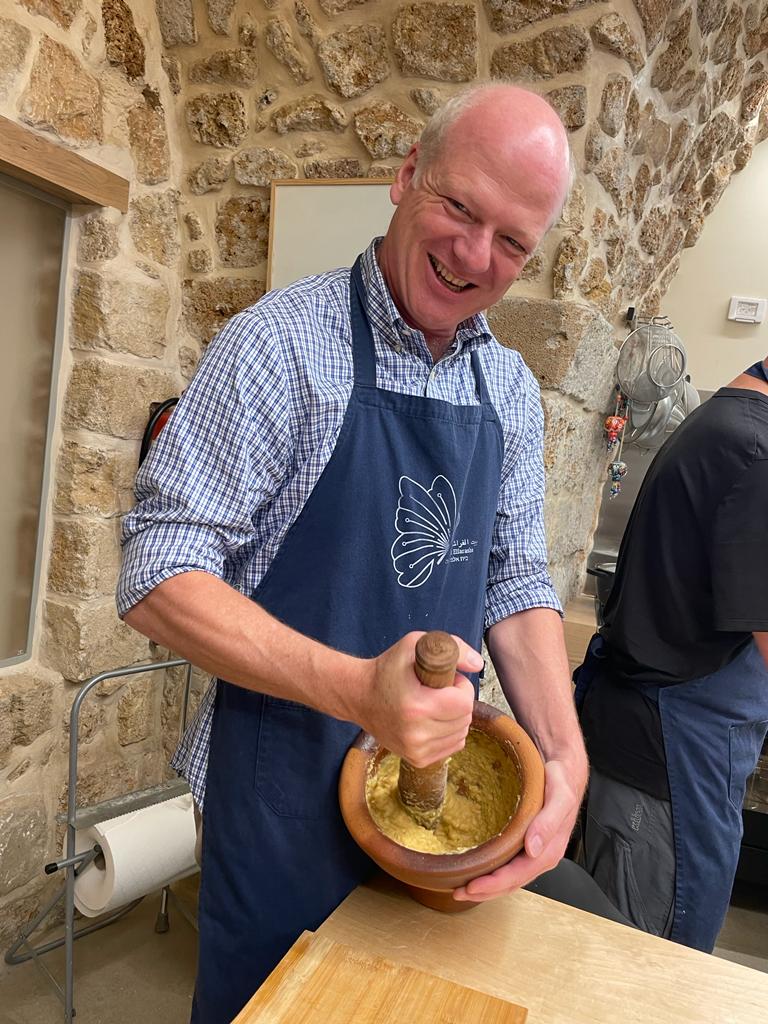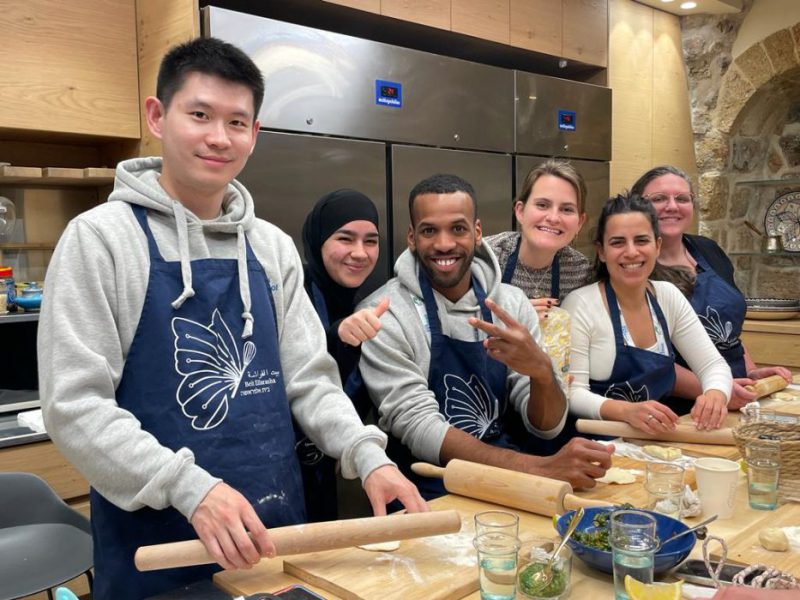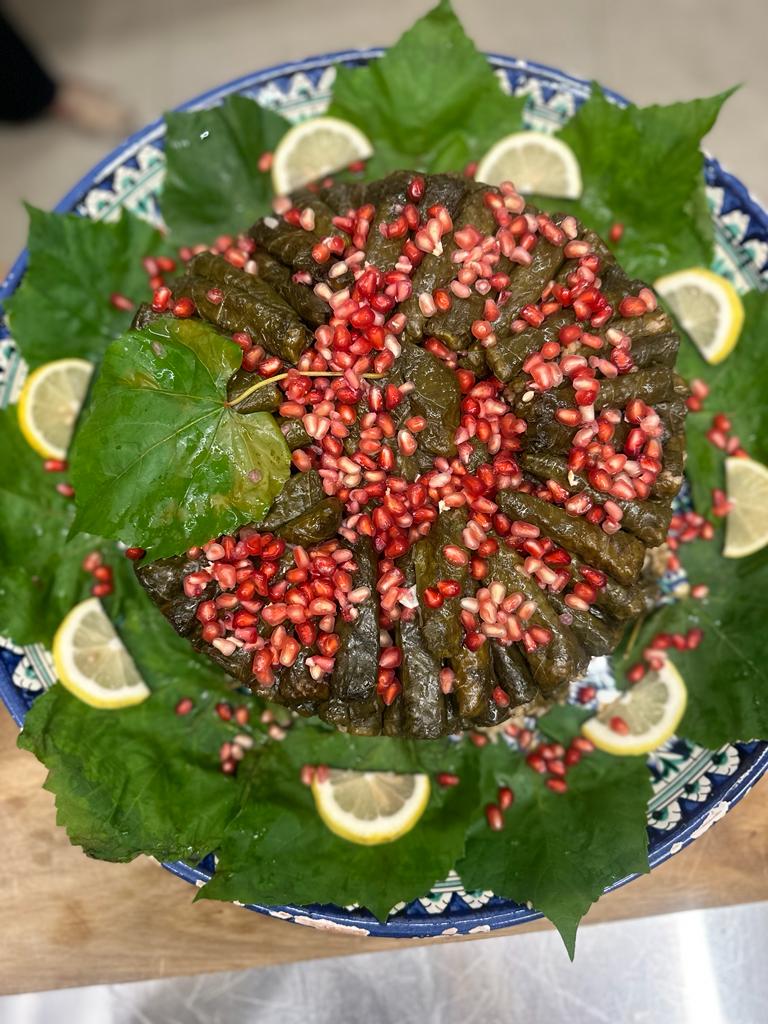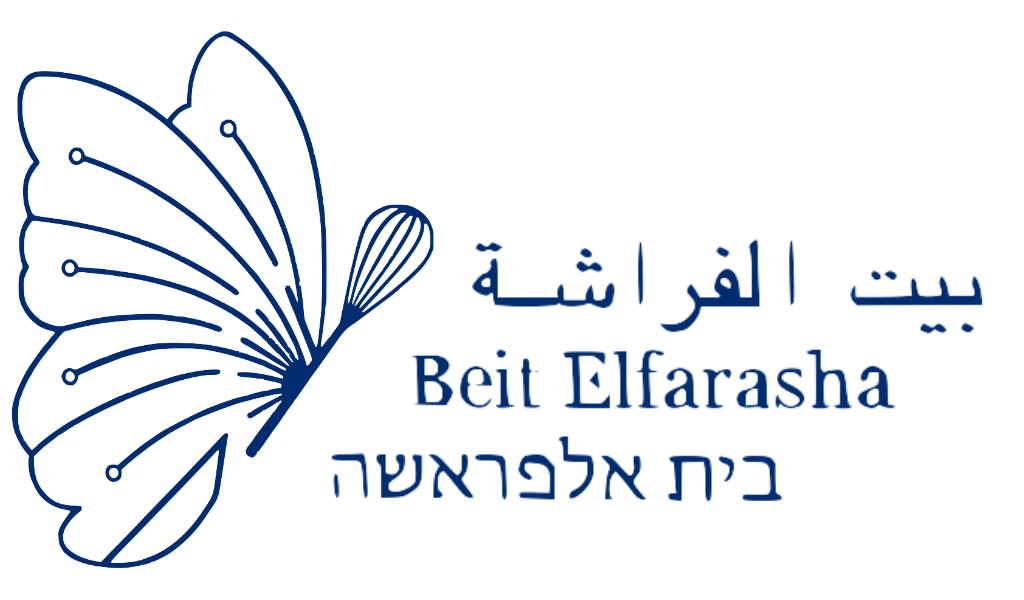" The most delicious secret in Akko is actually not from a restaurant at all "
Yael Rief is a food expert, veteran journalist, and editor of the "yummies" food section on the 13TV website.
Upcoming Events at Beit Elfarasha
Experience the thrill of Authentic Akko Cuisine!
Join us for a culinary adventure like no other. Meet inspiring local women, unveiling their kitchen secrets and life in Akko. Taste the creations of amazing cooks, hear their personal stories, and savor a delightful meal together. Two hours that will fly by like mere minutes. Make your trip to Akko truly unforgettable!
For more details :
052-609-2996
04-62-55551
Cooking Workshops
For over 4000 years the cuisine of Akko has been built around the sea and the produce of the surrounding hills. There are many typical dishes that are very connected to the broader culture of Lebanon and Syria. At the heart of our local culture is family, with family gatherings and food being at the core of who we are.
In our workshops we provide different offerings of the local food, with an emphasis on Akko specialties. Workshops will be based on options of fish, vegetarian, meat, stuffed vegetables and others. The workshops have a main theme and the accompanying dishes will change by the season.
We have personally vetted the women from Akko to deliver these workshops, ensuring they bring their culinary skills and personalities as they share their passion, pride and personal stories. Each workshop will last around four hours and will include learning how to prepare special dishes from local cuisine – and then eating what you cooked. Included is access to detailed menus (with the recipes) and a souvenir of a jar of pickles that you will prepare yourself in each workshop.
Interested in booking a workshop?




Weather permitting, morning workshops will begin with a short tour of the local market (shuk) in Akko – where your cook will explain why and how you purchase specific vegetables for the dishes you will be preparing. As examples: when making Sheik el Mashi, you need a very specific type of zucchini; or you need to choose the best fish for a Sayaadiya.
Of course no trip to the shuk (outdoor market) would be complete without a visit to the local spice store, where the spices are blended just right to bring out the extraordinary flavor of your dish.
In addition to the workshops, for those who are interested in a shorter, and less hands on experience, we offer an “eat with” experience where you will be able to choose from a variety of menus, if you come as a group or a chosen menu for individuals, (after Covid) which will be posted on our monthly calendar, and still be able to experience the local flavor and have access to the recipes of what you have eaten. Our cooks will prepare certain items in advance and cook some right in front of you, while you have a chance to talk and share life stories between yourselves and the cook, learning and discovering a new culture and building new friendships.
Workshops are 10-person minimum and starting prices are 300 NIS a person. We can also give a workshop for less people, the starting price is 3,000 NIS for whatever size group up to 10 people, and then anything over 10 will be charged 300 NIS a person.
Interested in booking a workshop?
Leave your details and we’ll get back to you ASAP!
مقلوبة -מקלובה - Maqluba
“Maqluba” consists of meat, rice, and fried vegetables and is known in the Palestinian region for over a 1,000 years. There are many historical accounts of this food and its popularity over the Levant. Perhaps the most frequently told story about the dish relates to the famed Sultan Saladin who, along with his soldiers, recaptured Jerusalem from the Crusaders in 1187 AD. They entered the Holy City victoriously. People celebrated this event and brought Saladin an exquisite dish, which he enjoyed very much.
When enquiring about the name of the tasty invention he described it as an “inverted dish,” because the cook flips the prepared meal on to trays in front of all the guests. Thus the name Maqluba – which literally means inverted, or upside-down.
This tasty meal can also be made as a vegetarian dish to adapt to our guests requests.
محاشي - מחאשי - Mahashi
The tradition of stuffed vegetables reportedly comes to us via Asia Minor and Central Asia between the third and seventh centuries A.D. In the seventh century, the Muslims spread the art of stuffing vegetables throughout the Islamic empire. When the Turks later invaded in the 11th century, they adapted the stuffed vegetable to their own taste and is known as Dolma. Over the years different empires brought new additions to the repertoire including grape leaves, eggplants, tomatoes, cabbage and you name it, to the original stuffed zucchini. It can be considered an early version of party food as it can be eaten while standing since rice and meat are inside the vegetables instead of the other way around!
Stuffed vegetables, called mahshi in Arabic, are a staple of the Middle East and they are prepared slightly differently in each Middle Eastern country. The multiple influences from endless invasions and from the surrounding countries have spawned stuffed vegetables of varying style. The unusual combination of meats, condiments and spices like allspice, cardamom, and cinnamon lend these dishes their exotic taste. When prepared with skill they are a delicacy.
Whatever the style, the procedure for making these dishes is similar. The vegetables – onions, tomatoes, potatoes or squash, for example – are cored. The stuffing is prepared with chopped meats, nuts and spices such as cinnamon, cardamom, coriander, sumac and saffron. Sometimes the stuffing includes rice or burghul (cracked wheat). Sometimes it is precooked; other times not. After stuffing, the vegetables are either baked or stewed.
شيخ المحشي - שיח' אל מחשי - Sheikh el Mahshi
In Arabic the head of the tribe is called sheikh. So in our workshop you will learn how to prepare the special Sheihk al Mahshi. This meal we will be combining a delicious blend of meat, pine nuts, rice and Middle Eastern spices. Indeed, all the ingredients that are fit for a sheikh.
This rich culinary fabric will be the setting to introduce you to the unique weave from which our own life stories are embroidered.
ورق عنب - עלי גפן - Grape leaves

Stuffed grape leaves are loved throughout the Middle East and beyond, and are consumed from Greece and Turkey up to Middle Asia.
The origins of stuffed vine leaves are unknown. They are known as dolme in Iran, dolmedes in Greece, tolma in Armenia, and yerba in Syria.
Spices used to enhance this popular dish can range from garlic and mint in some parts of Lebanon to cinnamon in what was Persia and Greece.
There are two widely popular versions of stuffed grape leaves, a vegetarian recipe typically served cold and one including ground beef in the stuffing, served hot.
- Yabarqa
The filling is rice and meat, and cooked in lemon juice, the size of the grape leaf that is used is medium and small and the rolled leaves look thin.
- Yalanji
The filling is rice and vegetables, the size of the grape leaf that is used is large, and the rolled leaves look thick. Yalnji is originally a Turkish word which means “liar.” It is called “liar” because the filling doesn’t have meat.
الكبة - קובה - Kubbeh
Kubbe Tartar
Fried Kubbe
Kubbea with Yogurt
Kubbe with sweet potatoes /potatoes
Vegetarian option- instead of meat Mushrooms
Kubbeh
Kubbeh is a family of dishes with about 90 different types. In the Eastern Mediterranean region it consists of the leanest lamb meat and the finest of all bulgur, mixed in a paste with meat that’s filled with fried meat, onion and pine nuts.
The word is derived from the Classical Arabic kubbah which means “ball”. Every family has its own kubbeh recipe, according to their different preferences with the most well-known being fried, grilled and raw. A different kind of kubbeh is from Iraq and Jewish Kurdish origins and is made with semolina instead of bulger. We say that the recipes are alive, since they walk along with people’s lives.
Traditionally, the Kubbeh was made in a mortar and pestle fashion, using a wooden mallet and grinding and mixing the meat into the bulger in a stone vessel until it becomes a dough. This is formed into a flattened piece in one’s palms then stuffed with minced fried lamb mixed with almonds, walnuts or pine nuts and fried in oil.
Every family has its own kubbeh recipe, according to the different preferences: Fried kibbeh, yogurt kubbeh, raw kibbeh, grilled kibbeh, baked kubbeh, kubbeh with tomato sauce and sesame paste and many more…. kibbeh in bergamot sauce.
Below are some of the kubbeh dishes we will be making together.
Raw kubbeh (kibbeh nayieh),
Made from bulgur and lamb only, simply laid out by spreading the patty in a flat dish and garnishing it with olive oil, finely chopped parsley and grated walnuts.
“Kubbeh al-Hamis”
Originating from Syria, the kubbeh is fried with oil then cooked in tomato sauce, tahini, fried onions, pomegranate syrup and pine nuts, served in different sizes.
Kubbeh with cooked yogurt
Kubbeh boiled with yogurt until liquid and cook the Cones with bacon filling serve hot on the dining table with a plate of cooked white rice.
Kubbeh with potatoes
It is cooked without meat, where meat is replaced by boiled mashed potatoes.
We look forward to sharing with you the art of kubbeh making as we talk of our own lives and history, which is as varied as the ways to make kubbeh.
مسخن - מסכן Musakhan
Chicken / Mushroom
Thin bread with meat or mushrooms
Musakhan
Musakhan is a Palestinian Arab dish, composed of roasted chicken baked with onions, sumac, allspice, saffron, and fried pine nuts served over taboon bread. The term “musakhan” literally means “something that is heated,” and is a dish that one typically eats with one’s hands, served from one plate for all. This dish is as traditional as Palestinian food gets. It originated in the Tulkarm and Jenin area. It is told that the dish is used by the Palestinians to gauge the quality of the olive oil pressed on their farms that season. It is also a part of happy occasions like weddings. Good olive oil will not change color or turn bitter when it is heated to brown the chicken and caramelize the onions. This is also why the name of the dish is derived from the word ‘sakhan,’ to heat.
The dish is simple to make and the ingredients needed are easily obtainable, which may account for the dish’s popularity. Many of the ingredients used—olive oil, sumac and pine nuts—are frequently found in Palestinian cuisine. This dish is also popular in the throughout the middle –east. You know what they say, “it’s finger lickin’ good!”
Please gather around with us while we make this family meal and we share our own families’ stories with you.
Sayadiyah - סיאדיה – صيادية
Another version of the Maqluba comes to us from the people of the “Sahel” (coast or shore) of the Mediterranean and is also very special. The people of the Sahel depend on fishing as their primary source of food and the dish is appropriately called Sayadieh (fish with spiced rice and caramelized onions). This dish also evolved as it made its way up the Palestinian mountainside areas. The dish started to be cooked with chicken and meat, rather than fish. Then other ingredients were added. Thus the name was changed, as the main ingredient was no longer fish. Thus creating another variety of Maqluba.
The key to getting the dish right is to season each and every layer with a unique local blend of spices. The result, an incredible taste from all the juices cooked together. An excellent example of where the whole is most certainly greater than the sum of its parts.
During our time of cooking together we will explore the layers of this wonderful dish, as we discuss the layers of our lives as Palestinian women.
Fatayer , Sfeeha- مخبوزات فطاير و صفيحة – פטאירו ספיחה
Fatayer are little pies popular throughout the Middle East. They can have a variety of fillings, from meat to cheese or spinach. I made a version called Fatayer bi Sabanekh, Lebanese Fatayer filled with spinach. It is lightly coated in a lemon and olive oil dressing before sealing inside circles of dough and baking until golden and flaky. Its small size makes Fatayer a perfect appetizer or light snack.
Sfeeha is a variation of a meat pie or fatayar, it is more of a pizza than a pie. Traditionally made with ground beef, and or ground lamb.
